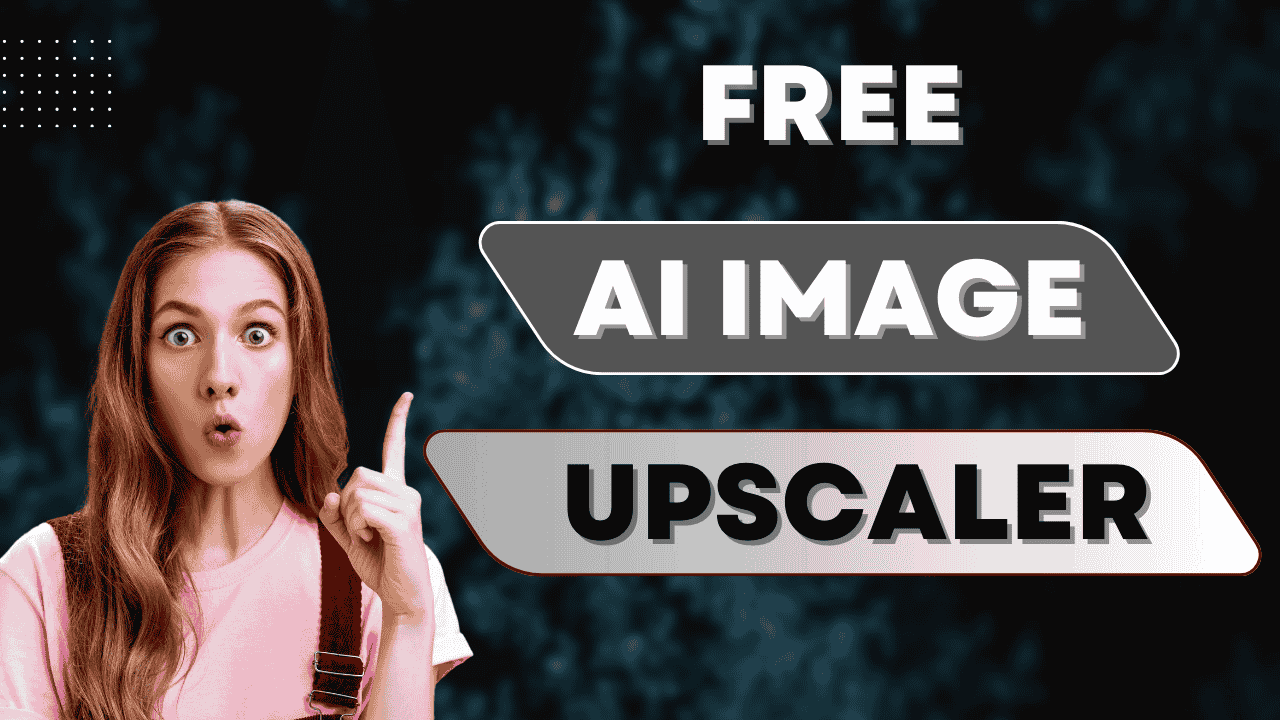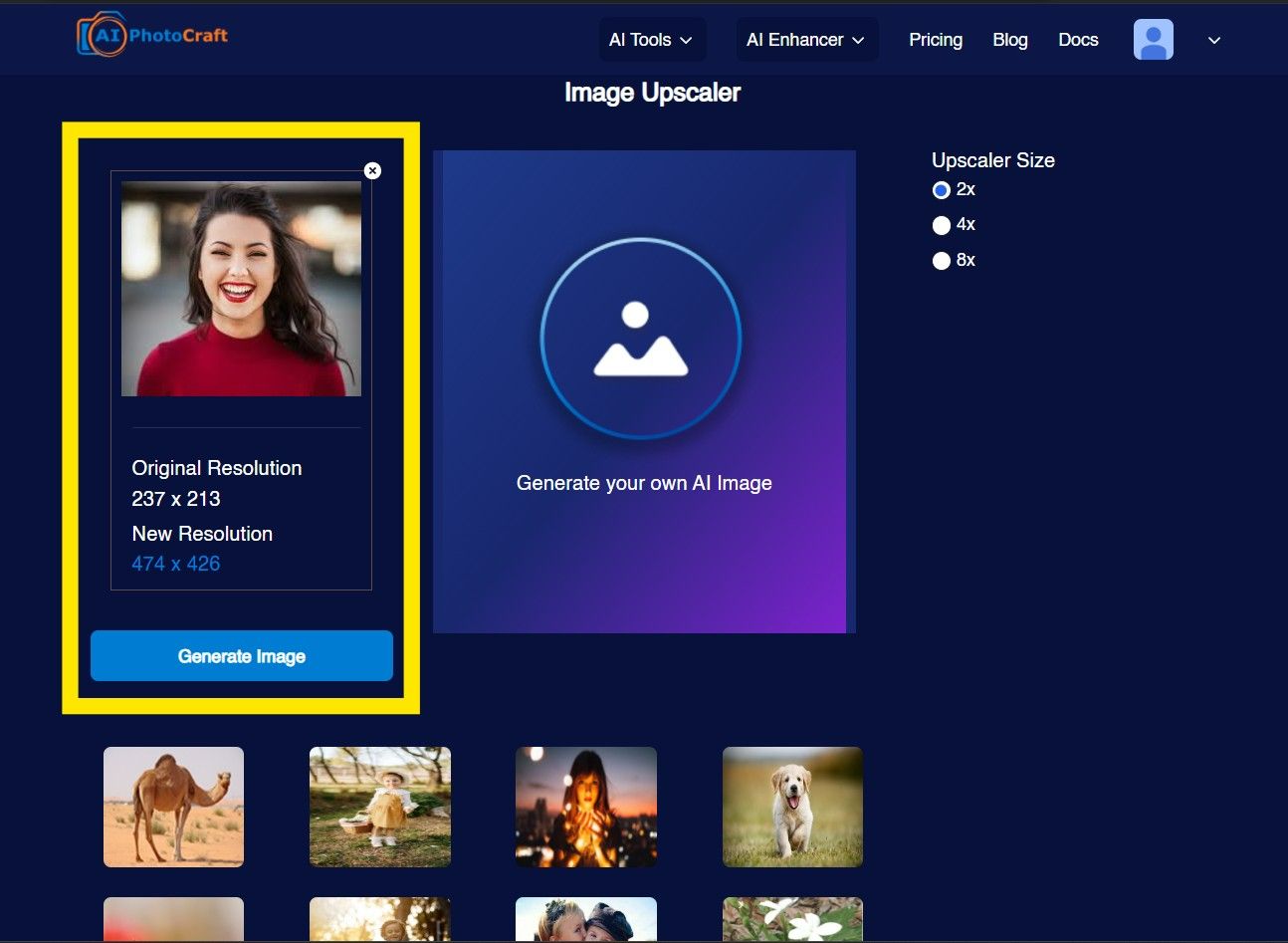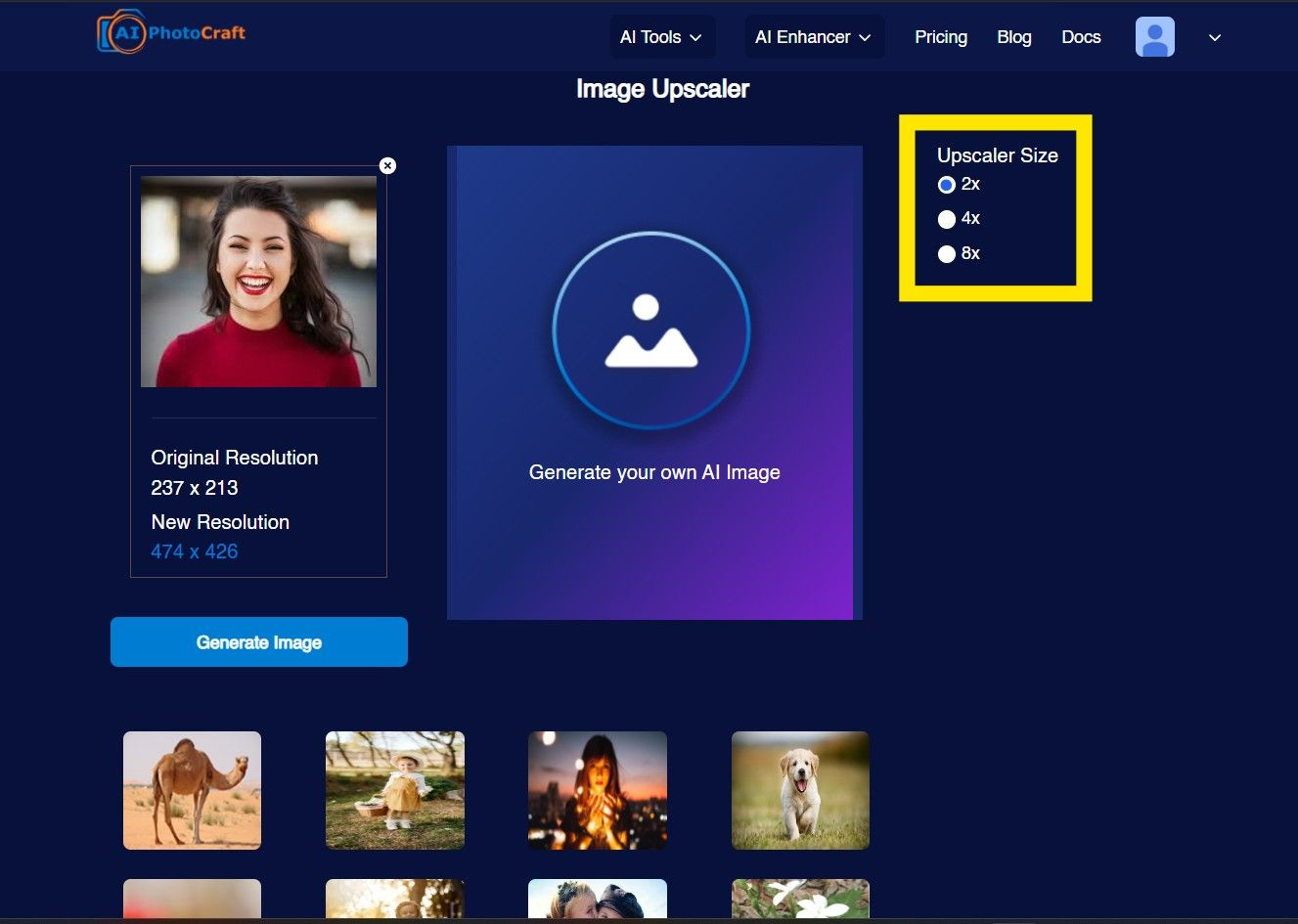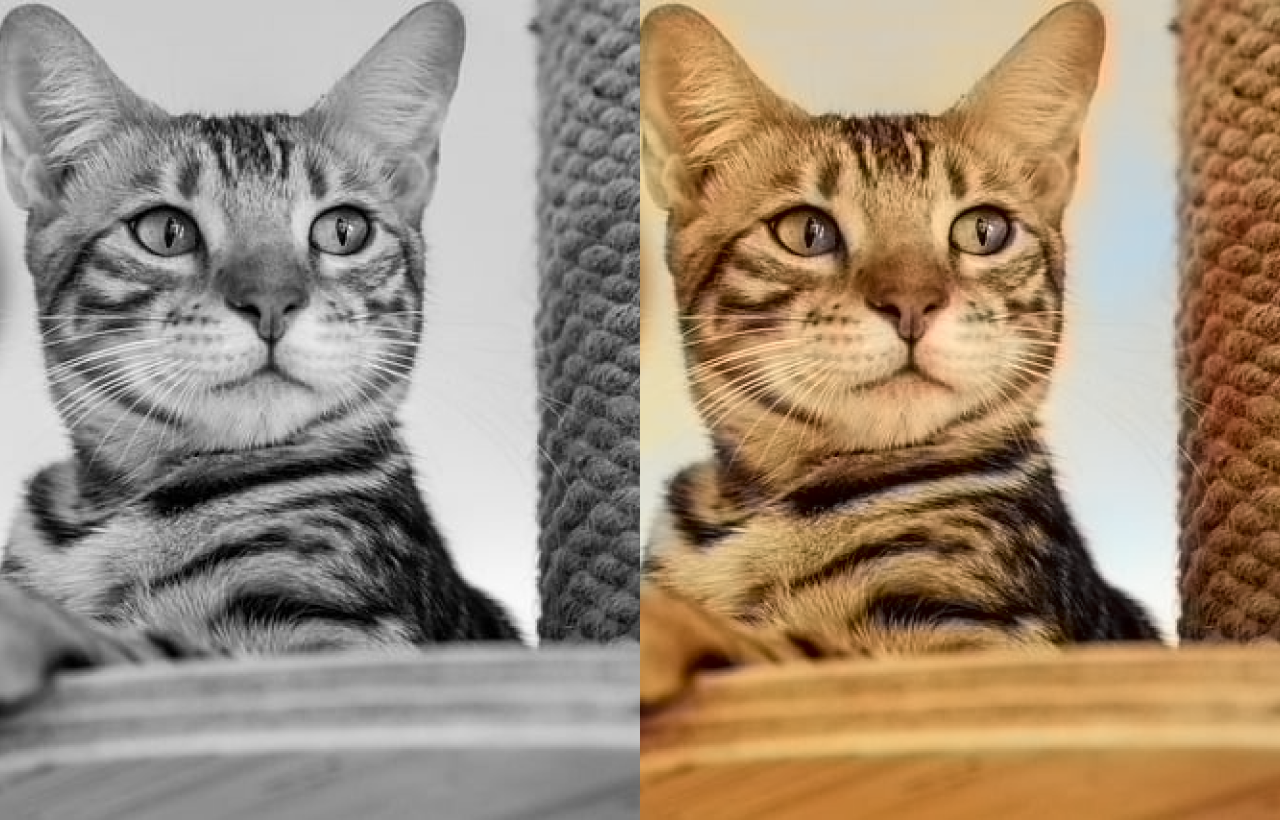Upscale Your Image Up to 8X Using AI Image Upscaler
Published: Nov 27, 2024

Shila Bastola
Content Writer @ Nep Tech Pal Pvt. Ltd.

AI upscaling is a process that uses artificial intelligence to enhance the resolution of an image. Unlike conventional upscaling, which merely enlarges pixels, AI upscalers use machine learning algorithms to predict and reconstruct finer details. This ensures that the enhanced image maintains its clarity and looks natural even at higher resolutions. For instance, an AI upscaler can convert a blurry thumbnail into a sharp, high-resolution photo suitable for display or print.
Importance of Image Quality in the Digital Age
In this modern digital era dominated by social media, image quality is paramount. High-resolution photos draw the eye, project professionalism, and increase user interaction. Images are now used heavily in communication, from social media campaigns to online shopping sites. Poor image quality can avoid viewers, reduce credibility, and compromise the desired impact of digital content. The finest image clarity and detail are becoming more and more necessary as technology advances, which makes modern image enhancement tools a vital resource.
The Rise of AI in Image Processing
Artificial intelligence has become a transformative force across various industries, and its influence on image processing is particularly noteworthy. Traditional methods for enlarging images often led to visible pixelation or blurring. AI-powered tools have eliminated such limitations by introducing neural networks capable of generating new, realistic details. These tools not only enhance resolution but also improve the overall quality and aesthetic appeal of images, enabling creators to achieve professional results effortlessly.
This article explores how AI image upscalers function, their benefits, and their practical applications. By focusing on tools capable of upscaling images up to 8X, we aim to provide readers with a comprehensive understanding of how to utilize these technologies effectively. From step-by-step guides to technical insights, this article serves as a detailed resource for anyone looking to improve their visual content.
Understanding AI Upscaling
How AI Upscalers Are Different from Traditional Methods
Traditional upscaling techniques rely on interpolation, a process where new pixels are created by averaging the values of neighboring ones. While this can increase the size of an image, it often results in a loss of detail and sharpness. AI upscalers, on the other hand, analyze patterns, textures, and structures within the image using deep learning. They then generate new pixels that replicate real-world details, creating an image that is not only larger but also more precise.
Comparison of AI Upscalers vs. Traditional Upscaling
The Science Behind AI Image Upscaling
At the heart of AI upscaling are convolutional neural networks (CNNs). These specialized algorithms are trained on massive datasets containing pairs of low and high resolution images. By learning the relationships between these pairs, the AI becomes capable of reconstructing high-quality images from low-resolution inputs. Key techniques include:
- Pattern Recognition: Identifying edges, textures, and repeating patterns.
- Pixel Prediction: Generating realistic details to fill in missing information.
- Adaptive Refinement: Consistently improving image quality through iterative processing.
Benefits of Using AI Upscalers
Enhanced Image Resolution
AI upscalers enable users to significantly increase image resolution while maintaining clarity. This is especially helpful for applications where detail and sharpness are crucial, such as large-scale printing or high-definition displays.
Retention of Fine Details
AI upscalers preserve fine details like fabric textures, facial features, or architectural elements, in contrast to previous techniques that produce pixelated or blurry results. The result is a realistic and visually appealing image.
Time-Efficient Processing
Manual image enhancement is time-consuming and often requires advanced skills. AI tools automate this process, enabling users to upscale images within seconds without sacrificing quality.
Accessibility and User-Friendliness
Many AI upscalers are designed with non-technical users in mind. Everyone can now afford high-quality image editing with user-friendly interfaces, which frequently only take a few clicks to produce stunning results.
Applications of AI Upscaling
Personal Photo Restoration
AI upscalers can restore old or low-resolution family photographs, bringing clarity and vibrancy to nostalgic memories.
Professional Photography Enhancement
AI tools can help photographers improve photos taken under difficult circumstances, keeping their portfolios looking professional.
Social Media Content Improvement
Visuals that are sharp and high-resolution look better on social media. Influencers and marketers can optimize their content for maximum engagement with the help of AI upscalers.
E-commerce Product Image Refinement
Upscaling the quality of product photos can help online retailers attract more customers and boost conversion rates.
Artistic and Graphic Design
Graphic designers and digital artists can enhance the resolution of their creations, ensuring they look stunning in both digital and printed formats.
Features of Advanced AI Upscalers
Resolution Multipliers: What Does 8X Mean?
An 8X upscaling factor means the tool can increase the resolution of an image by eight times its original size. For example, an image with a resolution of 500x500 pixels can be transformed into one with 4000x4000 pixels while maintaining quality.
Noise Reduction and Removal
An image can be made cleaner and more polished by using advanced AI upscalers to eliminate compression artifacts and reduce noise.
Edge Refinement and Detail Enhancement
Advanced algorithms improve small details and smooth out edges to give the image a crisper, more realistic appearance.
Support for Multiple File Formats
To ensure compatibility with different workflows, many AI tools support a large variety of file formats, such as JPEG, PNG, TIFF, and even RAW files.
Popular Free AI Upscalers
Free AI upscalers have democratized access to high-quality image enhancement. While they often have feature limitations compared to paid versions, these tools are highly effective for casual users or small-scale projects. They allow users to experience AI-driven image processing without any financial commitment.
AI Photocraft
The Free AI Image Upscaler by AI Photocraft is an advanced tool designed to enhance image resolution and quality with remarkable ease. This AI-powered solution is designed for individuals and businesses alike, offering professional-quality results without the need for costly software or advanced technical skills. Whether you’re looking to upscale a cherished photo, refine graphics for digital marketing, or improve visuals for an online store, AI Photocraft’s upscaler delivers impressive results in a user-friendly package.
Key Features of AI Photocraft's Free AI Image Upscaler
1. AI-Powered Upscaling
Advanced machine learning technology powers AI Photocraft's upscaler. By analyzing the input image, the tool intelligently predicts and reconstructs missing details, resulting in sharper, more vibrant images. In contrast to traditional methods that simply stretch existing pixels, this AI tool ensures that upscaled images appear natural.
2. 4X and Beyond Resolution Enhancement
With the tool's free upscaling capability of up to 8X, users can convert low-resolution photos into high-definition assets fit for professional or large-screen applications. This feature is particularly useful for projects requiring a higher level of clarity and detail, such as presentations or social media campaigns.
3. Noise Reduction and Artifact Removal
AI Photocraft’s upscaler includes built-in noise reduction capabilities. It smooths out grainy areas and removes compression artifacts often found in low-quality images, ensuring a polished and professional output.
4. Simple User Interface
The tool's user-friendly interface simplifies the upscaling process. Users can upload an image, select their desired enhancement settings, and download the upscaled image in just a few clicks. This ease of use makes it suitable for beginners and professionals alike.
5. File Format Flexibility
The upscaler supports a wide range of file formats, including JPEG, PNG, and BMP, ensuring compatibility with the most commonly used image types. This flexibility allows users to enhance images regardless of their original format.
6. Online Accessibility
As a cloud-based tool, AI Photocraft’s Free AI Image Upscaler requires no downloads or installations. Users can access it directly from their browser, making it a convenient solution for quick edits on the go.
7. Free for Personal Use
One of the standout features of AI Photocraft’s upscaler is its cost-free access for personal projects. Users can experience the benefits of AI-driven image enhancement without incurring any expenses, making it an excellent option for hobbyists or casual use.
Upscale Media: Simplicity and Accessibility
Upscale.media is a browser-based upscaler known for its ease of use. It supports basic 2x and 4x enhancements and works well for social media images and personal photos. However, its processing speed may be dependent on internet connectivity.
Let’s Enhance (Free Tier): Balancing Features and Costs
Let us Enhance provides a compelling free tier, allowing for a limited number of upgrades with impressive results. It combines upscaling and minor noise reduction, making it a popular choice for users who require quick and polished results without investing in high-end tools.
Leading Paid AI Upscalers
Topaz Gigapixel AI
Topaz Gigapixel AI is a powerful image upscaling application. Its advanced algorithms provide unparalleled sharpness, noise reduction, and fine detail reconstruction. Capable of up to 8X resolution enhancement, it’s favored by photographers, designers, and digital artists for its professional-grade results.
Adobe Photoshop Super Resolution
Part of Adobe’s Creative Cloud suite, Super Resolution is a feature within Adobe Camera Raw. It offers seamless integration with Photoshop workflows, making it a convenient choice for users already familiar with Adobe’s ecosystem. Its focus on detail preservation and edge refinement makes it a versatile tool for high-end projects.
AI Image Enlarger Pro
AI Image Enlarger Pro balances affordability with functionality. It supports various file formats and delivers excellent results for both personal and professional use. Its clean interface and adjustable settings make it suitable for users seeking customization without the complexity of advanced tools.
Step-by-Step Guide to Use an AI Upscaler with AI Photocraft
Step1: Uploading Your Image Correctly
Begin with the highest-quality version of your image available. If the tool has file size or format restrictions, ensure your image meets these criteria.

Step2: Adjusting Upscaling Parameters
Select the desired resolution enhancement (e.g., 2X, 4X, or 8X). Advanced tools may also offer options for noise reduction, edge refinement, and other enhancements.

Step3: Downloading and Saving the Enhanced Image
Once satisfied with the result, download the image in your preferred format and resolution. Save it with an appropriate file name for easy identification and use.

FInal Result

Tips for Achieving the Best Results
Starting with High-Quality Inputs
The better the input image, the better the output. Avoid using heavily compressed or pixelated images for upscaling, as they may limit the tool’s effectiveness.
Optimizing File Formats for Processing
Whenever possible, use lossless formats like PNG or TIFF for input and output. These formats preserve more image data, leading to higher-quality enhancements.
Selecting the Correct Resolution and Settings
Choose an upscaling factor that suits your intended use. For example, 8X may be ideal for large-format prints, while 2X or 4X may suffice for web graphics. Use additional settings like noise reduction to refine the final output.
Technical Aspects of AI Upscaling
Machine Learning and Neural Networks in Image Enhancement
AI upscaling relies on convolutional neural networks (CNNs), which are designed to process visual data. These networks identify patterns, textures, and structures within an image, enabling them to reconstruct missing details intelligently.
Dataset Training: How AI Learns Image Details
To train an AI upscaler, developers use vast datasets containing high-resolution and corresponding low-resolution image pairs. This training process allows the AI to understand how details scale and replicate them effectively during enhancement.
Predictive Pixel Reconstruction
AI upscalers don’t simply enlarge pixels; they predict what new pixels should look like based on context. This ensures that the enhanced image retains its realism and sharpness, even at significantly higher resolutions.
Challenges in AI Image Upscaling
Limitations in Handling Severely Blurred Images
AI upscalers perform best when the input image has identifiable patterns and textures. Severely blurred or extremely low-resolution images may lack sufficient information for accurate enhancement.
Computational Resource Requirements
Processing high-resolution enhancements can be resource intensive. While cloud-based tools offload this burden to remote servers, desktop solutions may require powerful hardware for optimal performance.
Dependency on Dataset Quality
The effectiveness of an AI upscaler depends heavily on the quality of its training dataset. Poorly trained models may produce artifacts or unnatural results, especially in complex images.
Ethical and Legal Considerations
Copyright Concerns in AI Image Manipulation
Using AI to enhance copyrighted images can raise legal and ethical questions. Always ensure you have the right to edit and use an image before processing it.
Transparency in AI-Generated Content
When presenting AI-enhanced visuals, it’s important to disclose the use of automated tools, especially in professional or academic contexts.
Balancing Automation and Artistic Intent
While AI upscaling is a powerful tool, it’s important to balance automation with personal creativity. Over-reliance on AI can detract from the human touch that defines artistic work.
Future of AI Image Upscaling
Evolving Algorithms and Improved Accuracy
AI upscaling technology continues to evolve, with new algorithms improving accuracy and reducing processing times. Future tools may deliver even more realistic enhancements with minimal user input.
Integration with AR/VR Technologies
As augmented and virtual reality technologies expand, AI upscalers will play a crucial role in enhancing visuals for immersive experiences.
Potential for Real-Time Image Processing
Real-time upscaling, where images are enhanced instantaneously during use, represents the next frontier in AI-powered image processing.
Conclusion
AI upscalers provide a revolutionary solution for enhancing image resolution and quality. They blend cutting-edge technology with user-friendly interfaces to empower creators across various fields.
Whether you’re a photographer, designer, or hobbyist, experimenting with free AI upscalers can unlock new creative possibilities.
As AI tools continue to evolve, they will increasingly complement human creativity, enabling users to achieve once unimaginable results. Embracing this technology marks a step forward in the pursuit of artistic excellence.






